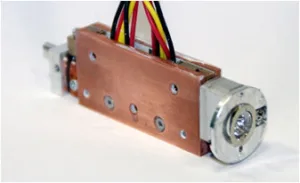At last year’s I/ITSEC event there were plenty of lamp-based projectors in various booths on the trade show floor. This year, not so many. In fact, the only lamp-based projectors we saw were F32 and F50 models from Barco. Lamp-based projectors still offer good value, noted Barco in our discussions with them, but the real reason they were being used was their compact size noted George Forbes of Immersive Display Solutions. “This is the smallest high resolution projector and is great for many applications where other projectors are just too big.”
So what is the solid state solution of choice? Laser-phosphor based projectors are the clear winners. Laser phosphor projectors offer much longer lifetimes than lamp-based models and this saves a great deal of money in terms of service calls, lamp replacement costs, simulator downtime, electricity and air conditioning.
The clear recommendation from all the projector makers was to over specify the brightness of the projector as that buys you some additional capabilities. For one, you can have a very bright simulator for daytime operations and you can dim the lasers down for nighttime ops. The dimmability varies by projector maker, but a few percent (Sony’s new 4K projector can dial down to 100 lumens) to around 30% seemed the range. Or, you can under drive the lasers initially and slowly increase over time for a constant brightness simulator. That could well increase the lifetime to 50% brightness from 20K to 40K hours, noted some.
In addition, having extra lumens allows you to go with screens that have less than unity gain. This will help increase contrast in domed or cylindrical simulators.
The only real trade-off mentioned by makers is the higher up-front cost of lasers over lamps. However, capital budgets are usually easier to get than maintenance budgets, so this may not be that big a hurdle.
LED projectors are also popular, but their light output has been limited to date. That may change with the introduction of the Philips ColorSpark RGB LED technology (photo) that can enable 3000 lumen LED projectors soon, moving upwards after that.
As a result, it seems likely that the vast majority of projectors for training and simulation will go solid state in the future.

